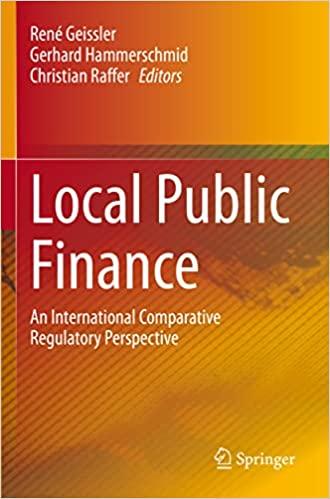Answered step by step
Verified Expert Solution
Question
1 Approved Answer
in May 2 0 1 3 , Rebecca Young completed her MBA and moved to Toronto for a new job in investment banking. There, she
in May Rebecca Young completed her MBA and moved to Toronto for a new job in investment banking. There, she rented a spacious, twobedroom condominium for $ per month, which included parking but not utilities or cable television. In July the virtually identical unit next door became available for sale with an asking price of $ and Young believed she could purchase it for $ She realized she was facing the classic buyversusrent decision. It was time for her to apply some of the analytical tools she had acquired in business school including "time value of money" concepts to her personal life.
While Young really liked the condominium unit she was renting, as well as the condominium building itself, she felt that it would be inadequate for her longterm needs, as she planned to move to a house or even to a larger penthouse condominium within five to years even sooner if her job continued to work out well.
Friends and family had given Young a variety of mixed opinions concerning the buyversusrent debate, ranging from "you're throwing your money away on rent" to "it's better to keep things as cheap and flexible as possible until you are ready to settle in for good." She realized that both sides presented good arguments, but she wanted to analyze the buyversusrent decision from a quantitative point of view in order to provide some context for the qualitative considerations that would ultimately be a major part of her decision
FINANCIAL DETAILS
If Young purchased the new condominium, she would pay monthly condo fees of $ per month, plus property taxes of $ per month on the unit. Unlike when renting, she would also be responsible for repairs and general maintenance, which she estimated would average $ per year.
If she decided to purchase the new unit, Young intended to provide a cash down payment of per cent of the purchase price. There was also a local deedtransfer tax of approximately per cent of the purchase price, and a provincial deedtransfer tax of per cent, both due on the purchase date. For simplicity, Young planned to initially ignore any other tax considerations throughout her analysis. Other closing fees were estimated to be around $
In order to finance the remaining per cent of the purchase price, Young contacted several lenders and found that she would be able to obtain a mortgage at a per cent APR semiannual compounding rate that would be locked in for a year term and that she would amortize the mortgage over years, with monthly payments. The money that Young was planning to use for her down payment and closing costs was presently invested and was earning the same effective monthly rate of return as she would be paying on her mortgage. Young assumed that if she were to sell the condominiumsay, in the next two to years she would pay per cent of the selling price to realtor fees plus $ in other closing fees.Calculation of monthly mortgage payment
Calculation of principal outstanding on mortgage after years, years and years.
Calculation of opportunity costs, on a monthly basis, of using the required amount for closing ie the required amount for down payment all closing costs instead of leaving the money invested at monthly rate calculated in
What would be your recommendation to Rebecca to rent or to buy? In your analysis, you will need to include of possible Toronto condo market scenarios mentioned in page scenario analysis, selling the condo after years, years and years, factoring in qualitative consideration.
Step by Step Solution
There are 3 Steps involved in it
Step: 1

Get Instant Access to Expert-Tailored Solutions
See step-by-step solutions with expert insights and AI powered tools for academic success
Step: 2

Step: 3

Ace Your Homework with AI
Get the answers you need in no time with our AI-driven, step-by-step assistance
Get Started


